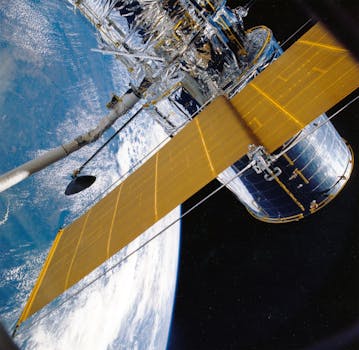Navigating Change: The Latest Trends in Satellite Telecommunications and Their Impact

Navigating Change: The Latest Trends in Satellite Telecommunications and Their Impact
Navigating Change: The Latest Trends in Satellite Telecommunications and Their Impact have been a crucial part of the global telecommunications landscape for decades, providing connectivity to remote and underserved areas, as well as supporting various industries such as aviation, maritime, and emergency services. The latest trends in satellite telecommunications are transforming the way we communicate, with advancements in technology and services that are having a significant impact on various industries and aspects of our lives.
Advancements in Technology
One of the most significant trends in satellite telecommunications is the development of new technologies such as High-Throughput Satellites (HTS) and Very High-Throughput Satellites (VHTS). These satellites offer higher speeds and greater capacity, making it possible to support more users and applications, such as broadband internet, video streaming, and IoT connectivity. Additionally, the use of advanced materials and propulsion systems is enabling the development of smaller, more efficient satellites that can be launched at lower costs.
Increased Demand for Satellite Services
The demand for satellite services is increasing rapidly, driven by the growing need for connectivity in various industries and applications. The use of satellite communications is becoming more widespread in areas such as aviation, where it is used to support in-flight entertainment and connectivity, as well as in the maritime industry, where it is used to support navigation and communication. Furthermore, the use of satellite communications is also becoming more prevalent in emergency services, such as search and rescue operations, and in remote areas, where it is used to support education, healthcare, and other essential services.
Impact on Various Industries
The impact of the latest trends in satellite telecommunications is being felt across various industries, including aviation, maritime, and emergency services. In aviation, the use of satellite communications is enabling the development of more efficient and connected aircraft, with the ability to support in-flight entertainment, navigation, and communication. In the maritime industry, the use of satellite communications is enabling the development of more efficient and safe shipping operations, with the ability to support navigation, communication, and cargo tracking. Furthermore, the use of satellite communications is also having a significant impact on emergency services, such as search and rescue operations, where it is used to support communication and coordination.
Challenges and Opportunities
While the latest trends in satellite telecommunications offer many opportunities for growth and development, there are also challenges that need to be addressed. One of the most significant challenges is the issue of congestion in the satellite spectrum, which is becoming increasingly crowded due to the growing demand for satellite services. Additionally, there are also concerns about the environmental impact of satellite launches and the disposal of satellites at the end of their life cycle. However, these challenges also present opportunities for innovation and development, such as the use of advanced technologies to reduce congestion and minimize the environmental impact of satellite operations.

